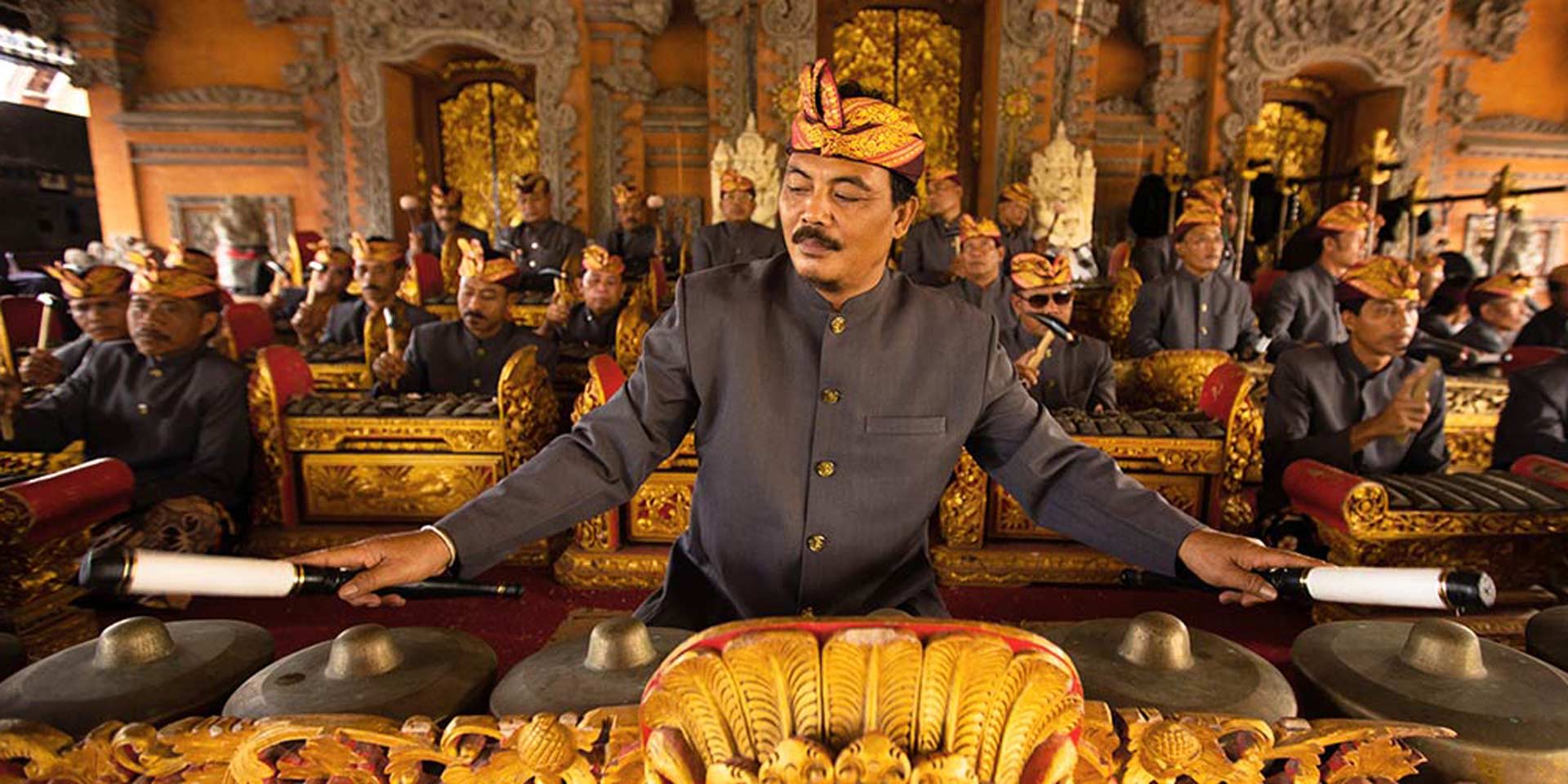Venture into beautiful Indonesia to discover its very heart and soul. A country of long and fascinating history, diverse cultures and rich traditions, Indonesia’s visual arts play an integral role in day-to-day life and special occasions. Beside the stunning beaches and perfect surf and beyond the workshops of wood-carving, batik-painting and jewelry-making experts, delve a little deeper to explore the long tradition of tribal, classical and popular music and the highly-stylized, richly-embellished dances it accompanies. Come along with us as we take a look at some of Indonesia’s finest cultural treasures and where to see them performed.
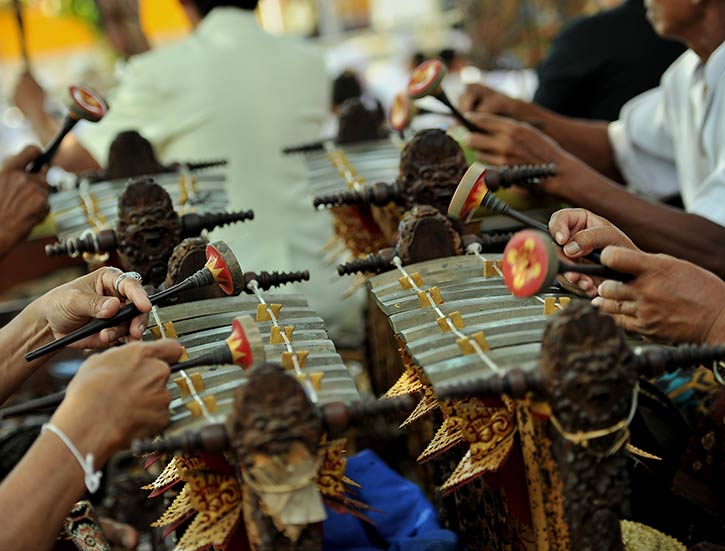
Music
The indigenous, classical music of Indonesia is as varied as its diverse terrains and dialects, but it is the distinct, haunting and hypnotic music known as gamelan that is most often associated with the country. Originating in Bali and Java, gamelan often accompanies traditional dance and theater, and any visit to the exotic isles should include an opportunity to experience it. Lose yourself in the rhythm, maintained by the kendhang – a set of drums played by hand, and embellished by the metallophones, which are beaten with mallets. Get swept away on the melody, woven by xylophones, bamboo flutes and vocalists – a male chorus punctuated with female soloists known as sindhen. Besides being a treat for your ears, a full gamelan orchestra is a sight to behold, the beautiful and unusual instruments made from bronze, iron, brass, wood or bamboo, many carved with intricate designs. It is perhaps no wonder this singular sound has had an influence that reaches well beyond its home, with identifiable echoes in works as broad as those of Philip Glass and Debussy. Having evolved through the centuries, inflected by religion shifts and colonization, this integral part of Indonesian culture is still a central part of formal occasions and important festivals ranging from the nationwide Independence Day, celebrated across the land annually on 17 August, to smaller, religious and tribal gatherings, unique to each town or village.
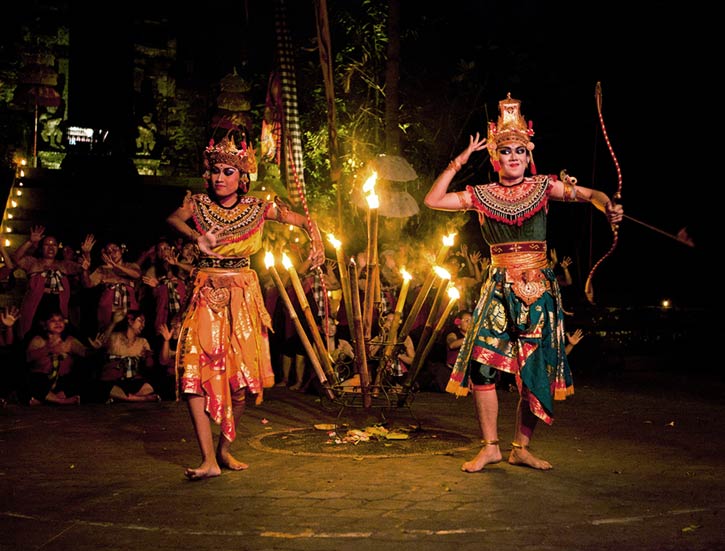
Dance
Much like the music, the dances of Indonesia vary widely across the the country, numbering as many as the ethnic groups indigenous to the myriad islands and each with its own long and fascinating history. There are court dances and folk dances, classical styles based on tribal traditions or religious epics and contemporary dances influenced by neighboring Asian cultures and western colonizers. Once again, however, it is the stylized dances of Bali and Java, accompanied by the gamelan, that are popular throughout the world. Allow yourself to be enchanted by the highly-studied and expressive performances of traditional dances, choreographed and performed with such intricacy that each minute movement speaks volumes, each turn of the head or arch of an eyebrow is richly imbued with meaning.
Be drawn into the Kecak – also known as the Ramayana Monkey Chant – in which 100 men sway and chant in rhythm; it is in this dance they are re-enacting a scene in the classic Hindu tale where Prince Rama fights the dastardly King Ravana with the help and guidance of a team of monkeys. Alternatively, follow the struggle between good and evil as you watch a performance of the Barong: two male dancers depict this mythological creature, the enemy of demon queen Rangda, in a costume with the mane and sharp teeth of a lion, controlling the head and body with amazing dexterity. The Saman dance from Aceh in Bali, meanwhile, will leave you breathless with the incredible speed and synchronization among its dancers; so renowned is this cultural treasure that in 2011, it was designated a world intangible heritage by UNESCO. Perhaps most famous of all Indonesian dances, though, is the Legong: performed as a duet by two young women dressed in gold with floral headdresses, this number is graceful, fluid and utterly captivating.
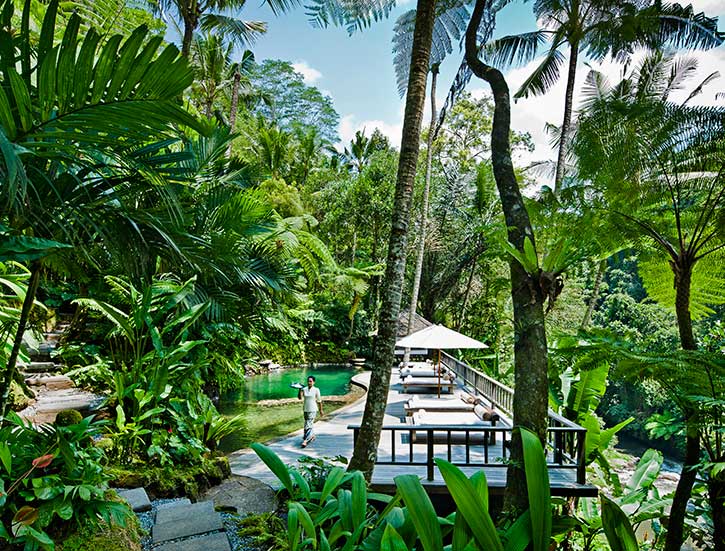
Discover classic Indonesia through its beautiful artforms on a journey to Bali, the “island of the gods”. Take in the matchless natural beauty as you train as a mahout to wrangle majestic elephants, go white-water rafting through waterfalls and turquoise lagoons and ride a horse across the pristine beach at sunset. Spend time with monks in their tranquil temples, learn the steady hand of a batik painter and discover the island’s contemporary art scene. Chief among Bali’s charms, though, is the chance to experience the dance and music infused into the culture. Meet students in a classical dance school, discuss the history of their artform and watch as they execute it flawlessly, accompanied by the unforgettable sounds of the gamelan. At special times of the year, locals celebrate religious or cultural festivals and often dances and music are performed in traditional costume. Around the beginning of April, the Bali Spirit Festival honors the island’s rich culture and history and visitors flock to see live shows and enjoy the color and energy. Galungan occurs around September, the exact dates depending on the Hindu calendar, and is a time to remember ancestors, make offerings and pay respects through ceremony and ritual. Whenever you choose to visit, complement your artistic explorations of Bali with a stay at COMO Shambhala Estate, a sanctuary of wellness and the perfect haven to connect with the Balinese way of life. Enjoy the peaceful gardens and indulge in authentic treatments in the tranquil spa, surrounded by the beauty of Ubud, the island’s cultural hub.
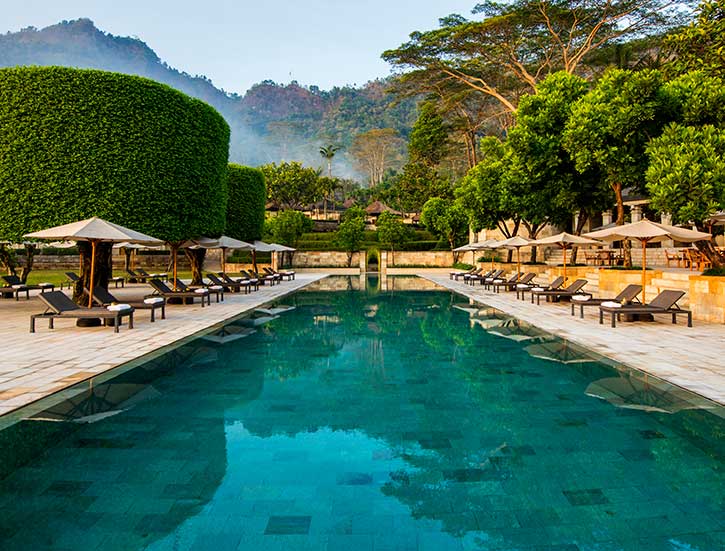
Journey into the heart of Java to see ancient traditions being observed and seamlessly incorporated into modern life, the two existing side-by-side. Delve into the wonders to be found in and around colorful Yogyakarta. From the Sultan’s palace, elaborately decorated with gold leaf, to the sedate pace of life in the neighboring blacksmith’s village, the whole spectrum of Javanese culture is yours for the exploring. Sample the flavors of local cuisine and spend time in contemplation at Prambanan temple complex. Here, besides marveling at the architecture influenced by historic Hindu tradition, you can take in a performance of authentic Javanese dance and music. Augment your journey of discovery with the chance to experience sunrise above the beautiful Borobudur Temple: this is where, in May, Buddhists from all over the island gather to celebrate Waisak, the day of Buddha’s birth, death and enlightenment, with ceremonial performances forming part of the ritual. Stay at suitably dramatic Amanjiwo, built from the land’s natural limestone, to echo the nearby temple in its amphitheatrical shape. Fully immerse yourself in the very essence of Java in your villa roofed with volcanic ash and decorated with local textiles and hand-carved coconut wood furniture, while marveling at the views of nearby Merapi, the country’s most active volcano.

